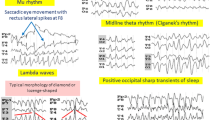Abstract
In rat fetuses over E17-20 with preserved placental circulation with use of mathematical analysis there were revealed value and character of connections of slow wave oscillations of the heart rhythm with motor activity for 30 min of observation. In the software PowerGraph 3.3.8, normalization and filtration of the studied signals were performed in three frequency diapasons: D1-0.02–0.2 Hz (5–50 s), D2-0.0083-0.02 Hz (50 s-2 min), and D3-0.0017–0.0083 Hz (2–10 min). The EMG curves filtrated by diapasons or piezograms were compared with periodograms in the corresponding diapasons of the heart rhythm variations. In the software “Origin 8.0”, quantitative estimation of the degree of intersystemic interrelations for each frequency diapason was performed by Pearson correlation of coefficient, by the correlation connection value, and by the time shift of maximum of cross-correlation function. It has been established that in the frequency D1, regardless of age, the connection of heart rhythm oscillations with motor activity is expressed weakly. In the frequency diapason D2, the connection in most cases is located in the zone of weak and moderate correlations. In the multiminute diapason (D3), the connection is more pronounced. The number of animals that have a significant value of the correlation connection rises. The fetal motor activity fires in the decasecond diapason in all age groups are accompanied by short-time decelerations of the heart rhythms. In the minute diapason, there is observed a transition from positive connections in E17 and E18 to the negative ones in E19-20. Results of the study are considered in association with age-related changes of ratios of positive and negative oscillations of the heart rhythm change depending on the character of motor activity.
Similar content being viewed by others
References
DiPietro, J.A., Irizarri, R.A., Hawkins, M., Costigan, K.A., and Pressman, E.K., Cross-correlation of fetal cardiac and somatic activity as an indicator of antenatal neural development, Am. J. Obstet. Gynecol., 2001, vol. 185, pp. 1421–1428.
Garmashova, N.L., Konstantinova, N.N., and Belich, A.I., On the problem of mechanisms of development of reflex activity, Zh. Evol. Biokhim. Fiziol., 1998, vol. 34, pp. 96–106.
Hirota, A., Kamino, K., Komuro, H., Sakai, T., and Yoada, T., Early events in development of electrical activity and contraction in embryonic rat heart assessed by optical recording, J. Physiol., 1985, vol. 369, pp. 209–227.
Timofeeva, O.P. and Vdovichenko, N.D., Study of cardiac, respiratory, and motor activity in rat fetuses, Zh. Evol. Biokhim. Fiziol., 2009, vol. 45, no. 6, pp. 559–566.
Timofeeva, O.P., Vdovichenko, N.D., and Kuznetsov, S.V., Dynamics of development of rhythmical heart activity in fetuses and newborn rats, Byull. Eksper. Biol. Med., 2011, vol. 152, no. 10, pp. 373–378.
Kuznetsov, S.V., Dmitrieva, L.E., and Sizonov, V.A., Cardiac, respiratory, and motor activity in norm and after activation of catecholaminergic systems in newborn rat pups, Zh. Evol. Biokhim. Fiziol., 2012, vol. 48, pp. 367–379.
Biopotentials of Human Brain. Mathematical Analysis, Rusinov, V.S., Ed., Moscow: Meditsina, 1987, 256 p.
Belich, A.I. and Konstantinova, N.N., Development of coordinational function of the central nervous system: phylo- and ontogenetic aspects, Zh. Evol. Biokhim. Fiziol., 2003, vol. 39, pp. 297–306.
DiPietro, J.A, Hodgson, D.M., Costigan, K.A., Hilton, S.C., and Johnson, T.R., Development of fetal movement-fetal heart rate coupling from 20 weeks through term, Early Hum. Dev., 1996, vol. 44, pp. 139–151.
Kuznetsov, S.V., Fast temperature oscillations as factor of synchronization of processes of spontaneous excitation in rat pups, Zh. Evol. Biokhim. Fiziol., 1999, vol. 35, pp. 376–383.
Kuznetsov, S.V., On mechanisms of genesis, structure, and functional role of endogenous rhythms, Zh. Evol. Biokhim. Fiziol., 2009, vol. 45, pp. 531–546.
Bursian, A.V., Structure of autorhythmical activity of contractile systems, Zh. Evol. Biokhim. Fiziol., 2012, vol. 48, pp. 186–199.
Author information
Authors and Affiliations
Corresponding author
Additional information
Original Russian Text © N.D. Vdovichenko, O.P. Timofeeva, A.V. Bursian, 2014, published in Zhurnal Evolyutsionnoi Biokhimii i Fiziologii, 2014, Vol. 50, No. 2, pp. 92–96.
Rights and permissions
About this article
Cite this article
Vdovichenko, N.D., Timofeeva, O.P. & Bursian, A.V. Quantitative estimation of connection of the heart rate rhythm with motor activity in rat fetuses. J Evol Biochem Phys 50, 103–108 (2014). https://doi.org/10.1134/S0022093014020021
Received:
Published:
Issue Date:
DOI: https://doi.org/10.1134/S0022093014020021




